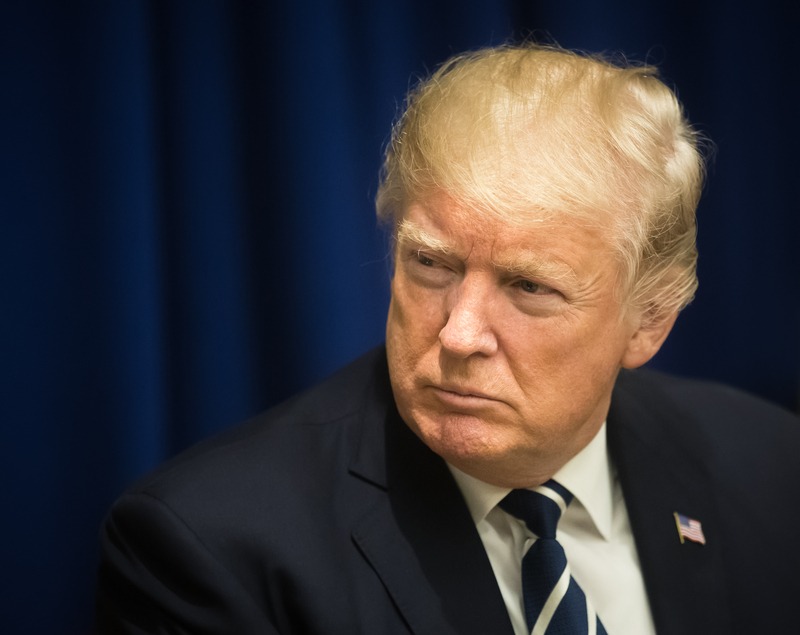President Donald Trump escalated his public pressure campaign against Federal Reserve Chair Jerome Powell on Monday by sending him a handwritten note scrawled in Sharpie marker, criticizing the central bank’s decision to maintain current interest rates.
White House Press Secretary Karoline Leavitt displayed the note during a briefing on June 30, 2025, calling it “original correspondence from the President of the United States to our Fed Chair Jerome Powell.” The message was written across a chart showing central bank rates from 44 countries worldwide.
Trump’s note, written in his characteristic block letters with a black marker, addressed Powell directly. Trump wrote, “Jerome – You are, as usual, ‘too late.'” The message continued with accusations that Powell had cost the United States significant financial losses and demanded rate reductions, ending with Trump’s signature across the bottom.
The chart Trump used showed interest rates from various nations, with Switzerland leading at 0.25 percent while the United States ranked among the ten countries sharing the bottom position at 4.5 percent. Trump marked the chart with “Should be here,” directing an arrow toward countries with lower rates near the top of the list.
The president later amplified his message on his Truth Social platform, calling for a one percent interest rate and stating that Powell and the Federal Reserve board members should be ashamed of themselves. He claimed the board was failing in what he described as one of the easiest yet most prestigious jobs in America.
This latest confrontation comes as the Federal Open Market Committee maintained the federal funds rate at 4.25 percent to 4.50 percent for the fourth consecutive meeting in June 2025. Powell has consistently stated that Fed decisions would not be influenced by political pressure, despite Trump’s ongoing criticism.
Trump’s frustration with Powell intensified over the weekend when Trump appeared on Fox News’ “Sunday Morning Futures.” During the interview, Trump called Powell a stupid person and criticized him for not lowering rates to less than two percent. The president argued that the United States should match rates similar to Switzerland, which maintains rates at much less than one percent.
Powell testified before the Senate Finance Committee last week, explaining the Fed’s cautious approach to rate cuts. He indicated that uncertainty surrounding Trump’s tariff policies was injecting volatility into markets and affecting the Fed’s decision-making process. Powell acknowledged that tariff inflation was expected to increase but emphasized the uncertainty about how much of that cost would be passed through to consumers.
The president has made multiple personal attacks against Powell in recent weeks, referring to him as “Mr. Too Late” and questioning his competence. Trump has threatened to fire Powell, though the president lacks the authority to remove the Fed chair before his term expires. Trump has also begun openly speculating about potential successors, with Treasury Secretary Scott Bessent indicating he would accept the position if offered.
During Leavitt’s briefing, she defended Trump’s approach by claiming there had been politicization of the Fed. She argued that Powell had cut rates multiple times before the election when President Joe Biden was in office, but now refused to do so when economic conditions had improved. Leavitt avoided directly addressing questions about why Trump would not simply attempt to fire Powell.
The Fed chair was originally appointed by Trump during his first term in 2018, making the current conflict particularly notable. Powell’s current term leading the central bank expires next year, leading to widespread speculation about his replacement. Trump has even suggested he might name himself as Fed chair, claiming he would perform better than the current leadership.
Trump’s handwritten note strategy reflects his preferred method of public communication, similar to previous instances where he used Sharpie markers to alter official documents. The White House presented the note as evidence of Trump’s commitment to lowering borrowing costs for American consumers.
The current standoff between Trump and Powell represents a broader tension between political pressure and Federal Reserve independence. Powell has maintained that the central bank’s decisions are based on economic data and analysis rather than political considerations, while Trump continues to demand immediate action to reduce interest rates to stimulate economic activity.











